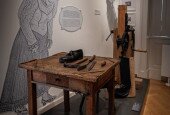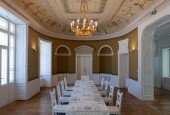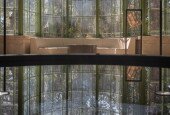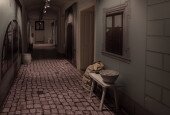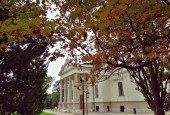Lenck Villa
At the end of the 19th century the richest, wine-trading families in Sopron (Russ, Flandorffer, Lenck) started to build luxurious city villas in Sopron.
In the 1870s, Deák Square was established by vaulting the Rák (Bánfalvi) brook. At its western end the Lenck Villa was built in 1892 in the Classicist style, based on the plans of Otto Hofer, a Viennese architect born in Sopron. In 1901, however, the businesses of the Lenck family went bankrupt, and the family lost everything except their shop in the Lenck gateway. At the beginning of the 20th century, a famous guest of the villa was the Danish heir to the throne, who later became King of Denmark as Frederick VIII.
In 1913, the first permanent museum in Sopron, the Palace of Culture opened here. With the constant accumulation of the material of the Sopron Museum, new exhibition sites opened in and around the town in the 1960s and 70s. The ethnographic collection of the exhibition material remained in the Lenck Villa. Unfortunately, after the fall of communism, the condition of the building deteriorated, so the exhibition had to be closed.
In September 2020, after 15 years, the magnificent villa building opened again completely renovated inside and out. In the new exhibition, in addition to the ethnographic material, visitors can also gain an insight into the everyday life of the wealthy merchant families in Sopron as well as into the traditions of the Sopron handicrafts.
The museum is open from Tuesday to Sunday from 10 a.m to 6 p.m.


